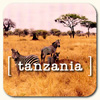
|
||||||||||||||
|
 SNOWS OF KILIMANJARO DISAPPEARING AT ACCELERATED RATE SNOWS OF KILIMANJARO DISAPPEARING AT ACCELERATED RATE27 February 2006 Research and new images show glaciers famed as "snows of Kilimanjaro" receding at alarming rate, far faster than projections had suggested. Researchers at Ohio State University, who warned five years ago that the famed snowcap on Mount Kilimanjaro might melt or even disappear now say the melt is occurring, but at a rate much faster than expected. New evidence shows that fissures and holes have formed in multiple glaciers across the summit, some reaching down to bedrock. This means significant weakening in the glacial structure, and the likelihood that warmer temperatures will penetrate deeper and more widely throughout the ices. There are concerns that disappearing glacial ice and snow could leave the region more starved for sources of already scarce drinking and irrigation water. Regional water systems depend on seasonal runoff from the glaciers, and their disappearance deprives the region of a recurring and replenishable source of fresh water. In 2002, the warning was issued that without a slowing in global warming, the Kilimanjaro snowcap could disappear completely sometime between 2015 and 2020. The news shocked many around the world, who expected at least a longer period of decline. Now, new photographs clearly show significant retreat affecting the glaciers around the summit. Fears of economic impact from tourism decline are only one point of concern; more significant is the effect the missing store of fresh water will have on the region's agricultural and economic sustainability. The mountain's name derives from the phrase Kilima Njaro, meaning "shining mountain" in Swahili. It is also called Oldoinyo Oibor, which means "white mountain" in Masai. It has been known throughout recorded history for its altitude (highest point in Africa) and for its iconic "snows", the white cap of glacial ice and snowfall visible from far across the Rift Valley. Kilimanjaro is a stratovolcano, meaning that it is made of both lava flow and pyroclastic material (rocks fragments broken apart by volcanic activity, often spewed from a volcano in a mixture of searing hot gases). Across the summit there are dispersed more than one cone, mostly inactive in modern times, though sulfur and heat, including steam are still emitted from the youngest of the cones, Kibo. It is Kibo's summit which is covered in glacial ice and snowfall, and stands as the highest point on the African continent. It retains an almost intact volcanic structure, but has been eroded by glacial activity and is surrounded by an estimated 250 "satellitic" volcanic cones. Tanzania is presently facing not only a significant change to its landscape and the loss of one of the world's most renowned geographic features, but also the disappearance of a major ecosystem-stabilizer that helps to regulate the climate, wildlife and terrain of the region. [s]
BACKGROUND: The snows atop Mount Kilimanjaro, made famous by Ernest Hemingway's haunting story, are melting. The glaciers that crown the Tanzanian peak are disappearing, and scientists believe they are in danger of vanishing altogether by 2015. [Full Story] |
|||||||||||||
|
||||||||||||||






